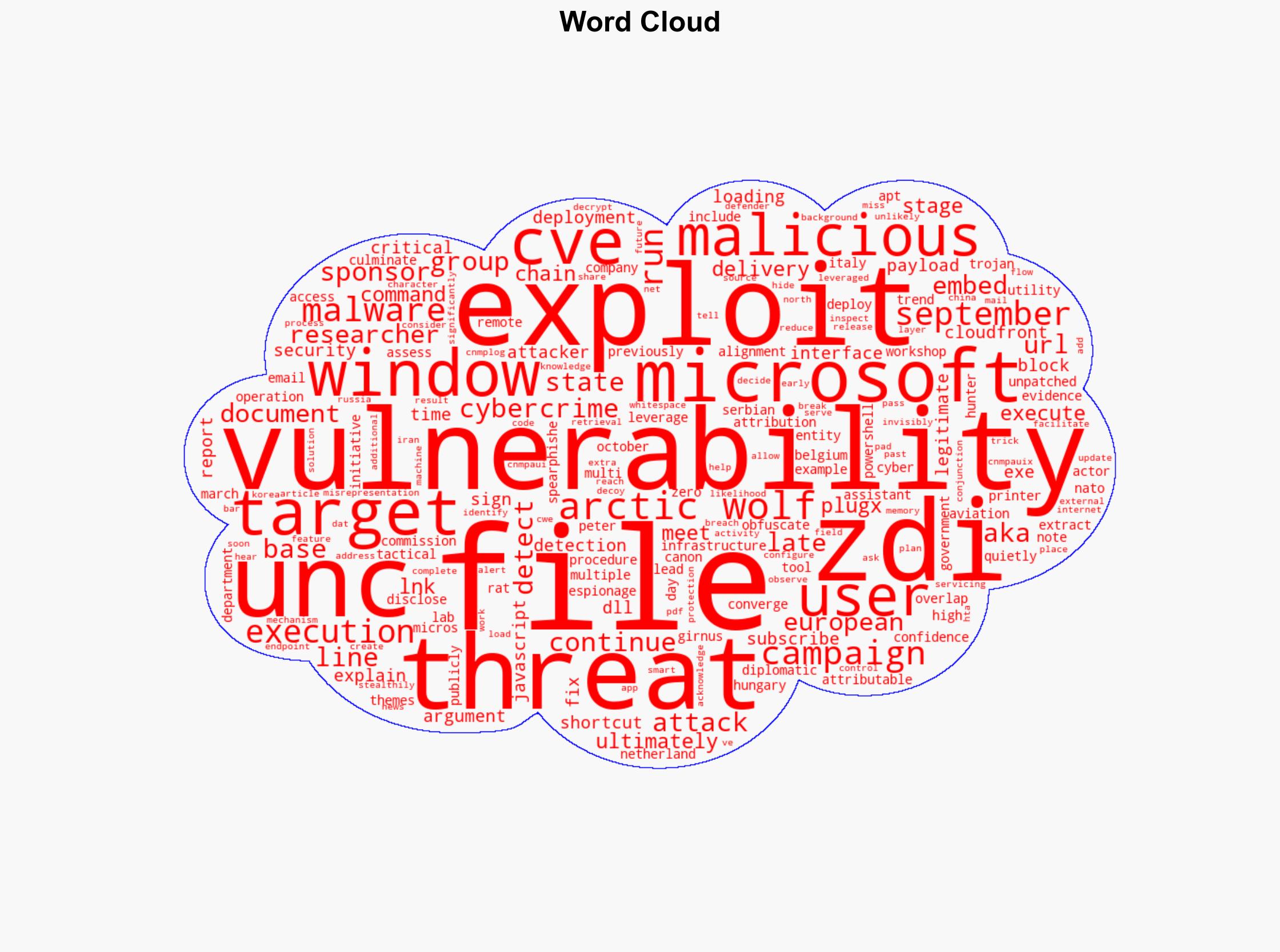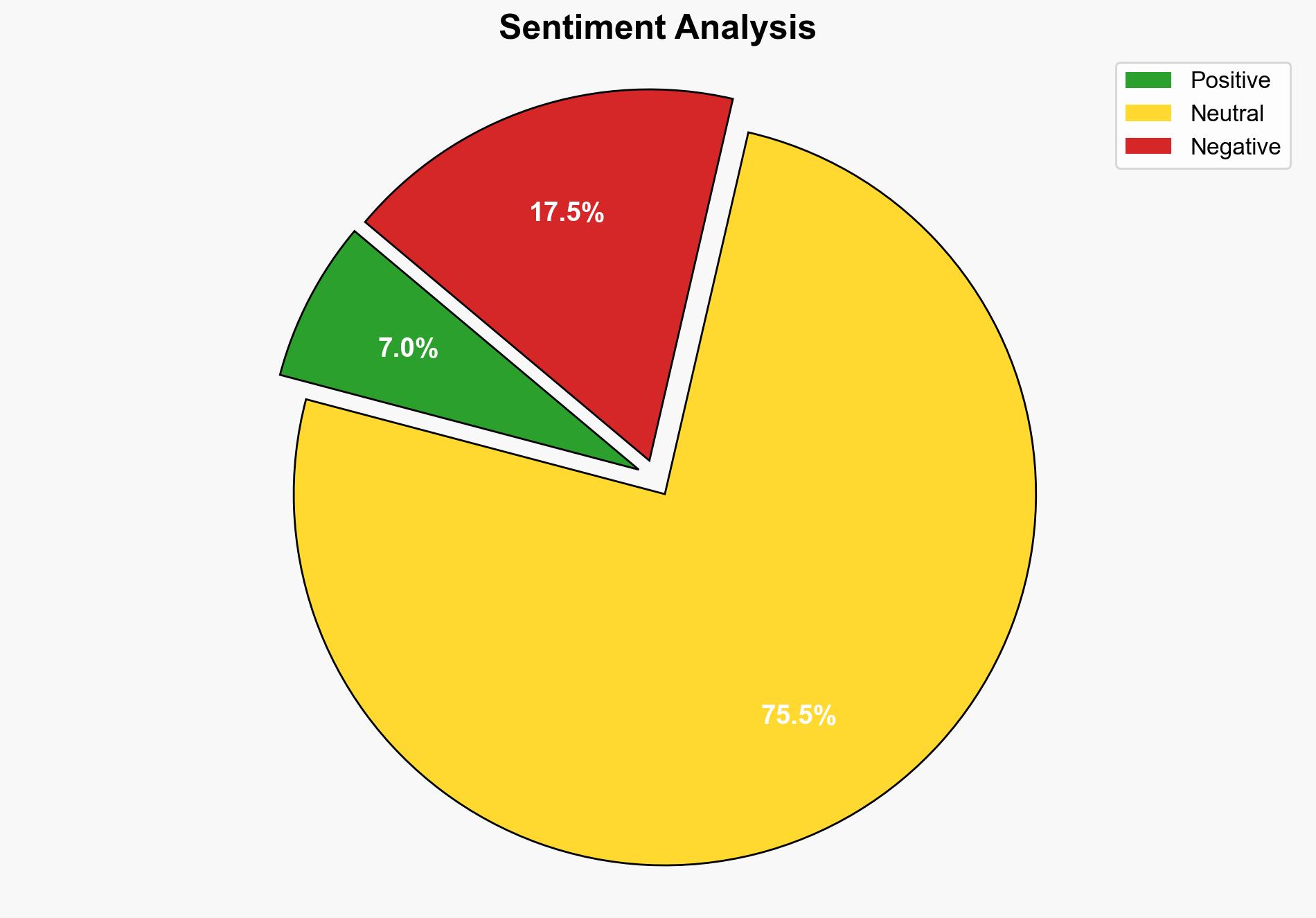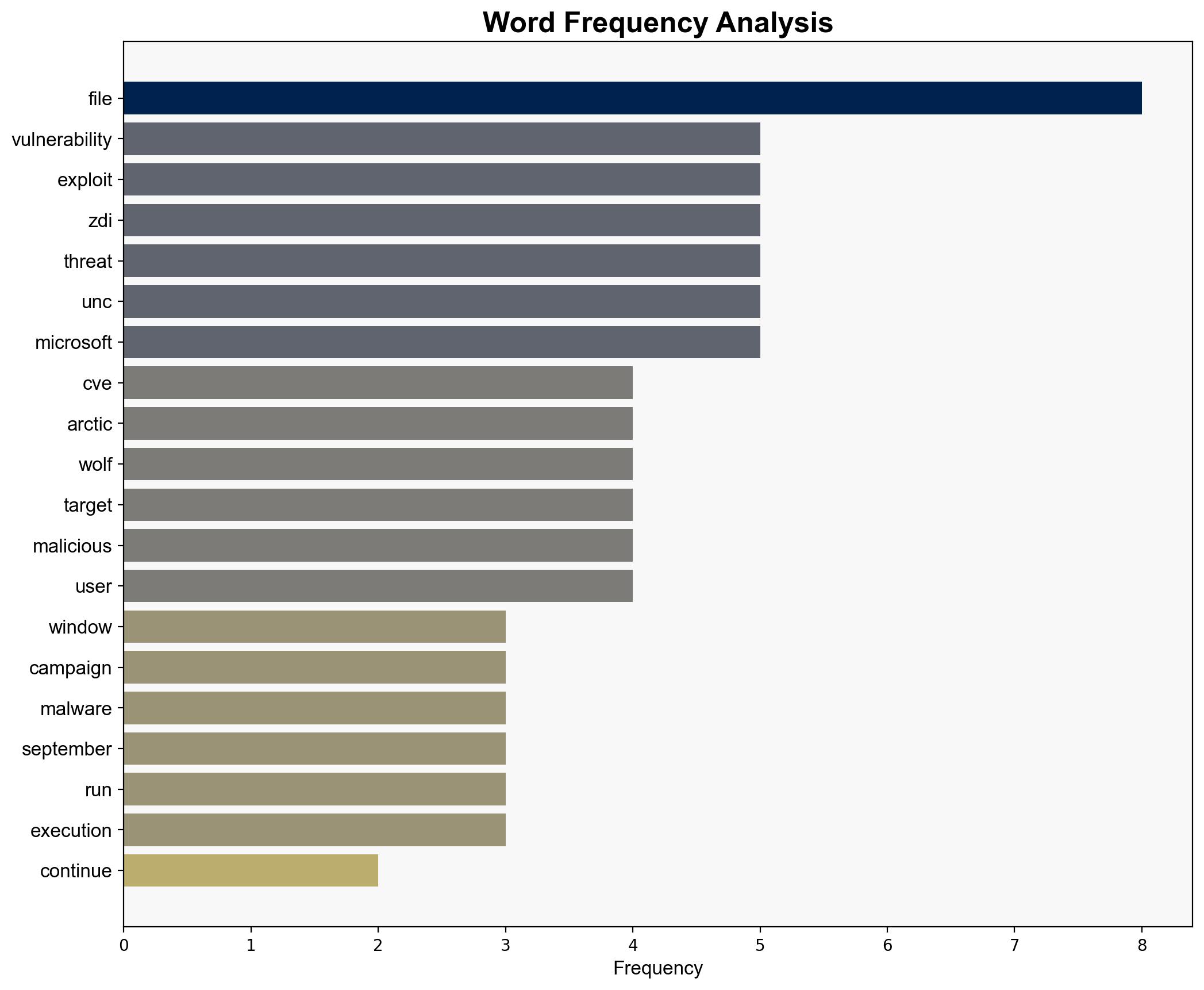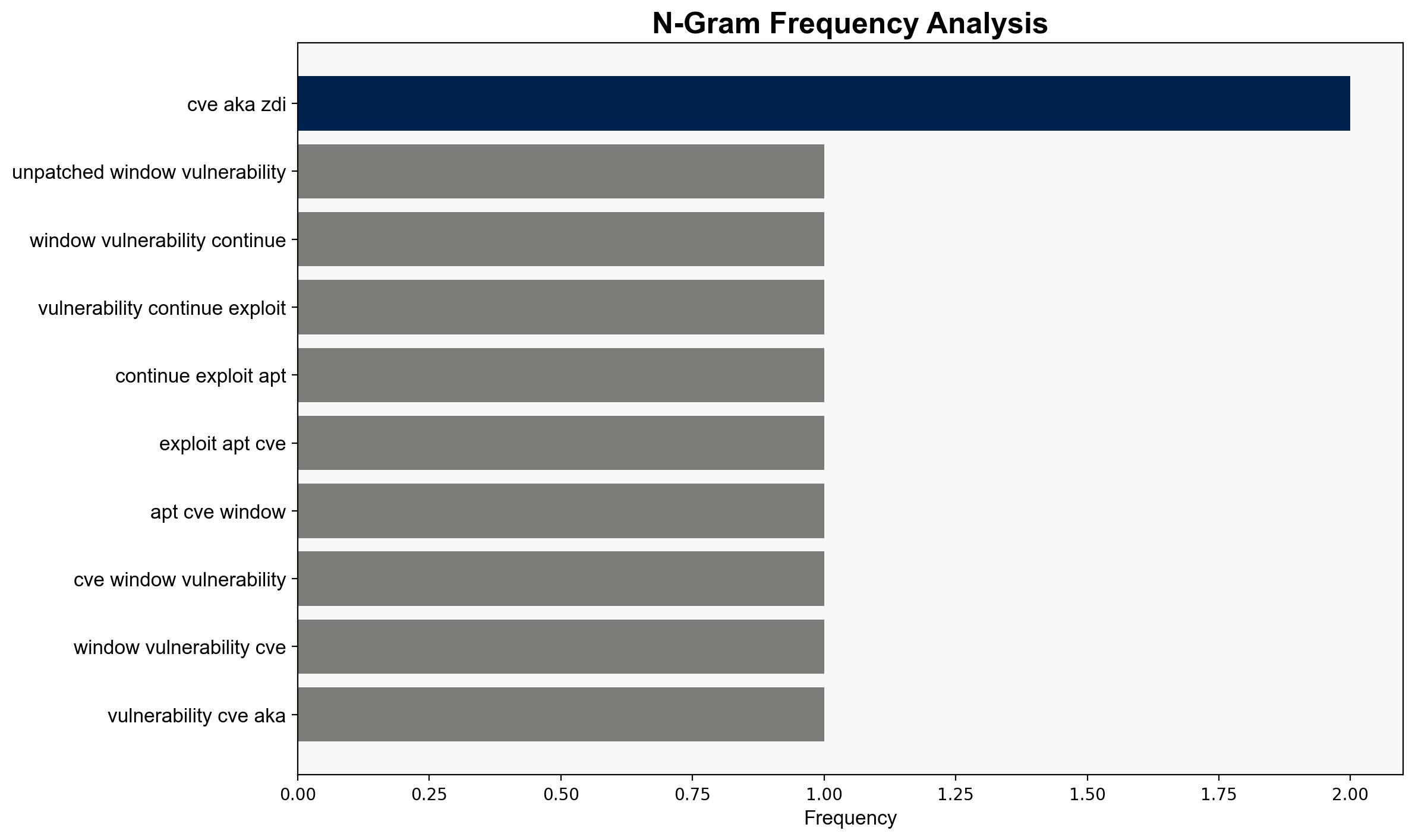Unpatched Windows vulnerability continues to be exploited by APTs CVE-2025-9491 – Help Net Security
Published on: 2025-10-31
Intelligence Report: Unpatched Windows Vulnerability Continues to be Exploited by APTs CVE-2025-9491 – Help Net Security
1. BLUF (Bottom Line Up Front)
The unpatched Windows vulnerability CVE-2025-9491 is actively exploited by state-sponsored threat actors and cybercriminal groups, posing a significant cybersecurity threat to European diplomatic and governmental entities. The hypothesis that this exploitation is primarily driven by state-sponsored espionage activities is better supported. Confidence level: High. Recommended action: Immediate patch development and deployment, enhanced monitoring, and international collaboration on cybersecurity defenses.
2. Competing Hypotheses
1. **Hypothesis A**: The exploitation of CVE-2025-9491 is primarily driven by state-sponsored espionage activities targeting European diplomatic entities.
2. **Hypothesis B**: The exploitation is primarily driven by cybercriminal groups seeking financial gain through ransomware or data theft.
Using Analysis of Competing Hypotheses (ACH), Hypothesis A is more supported due to the alignment of tactics, techniques, and procedures (TTPs) with known state-sponsored actors, the targeting of diplomatic entities, and the use of sophisticated malware like PlugX RAT. Hypothesis B lacks strong evidence as financial motivations and typical ransomware indicators are not prominent.
3. Key Assumptions and Red Flags
– **Assumptions**: It is assumed that the observed TTPs are exclusive to state-sponsored actors, which may not account for evolving cybercriminal capabilities.
– **Red Flags**: Limited information on the specific motivations of the attackers and potential underreporting of financial impacts.
– **Blind Spots**: Lack of insight into internal security measures of targeted entities and potential undisclosed collaborations between state actors and cybercriminals.
4. Implications and Strategic Risks
The continued exploitation of this vulnerability could lead to significant diplomatic tensions, especially if sensitive information is compromised. There is a risk of cascading cyber threats affecting critical infrastructure if the vulnerability is not patched. Geopolitically, this could exacerbate tensions between nations, particularly if attribution to specific state actors becomes public.
5. Recommendations and Outlook
- **Immediate Action**: Urge Microsoft to prioritize patch development and release. Encourage organizations to implement interim security measures, such as enhanced monitoring and user education on phishing tactics.
- **Scenario-Based Projections**:
– **Best Case**: Rapid patch deployment mitigates the threat, and international cooperation strengthens cyber defenses.
– **Worst Case**: Prolonged exploitation leads to significant data breaches and geopolitical conflicts.
– **Most Likely**: Continued exploitation until a patch is released, with increased cyber espionage activities.
6. Key Individuals and Entities
– **Peter Girnus**: Threat hunter at Trend Micro’s Zero Day Initiative, involved in the public disclosure of the vulnerability.
– **Arctic Wolf Labs**: Provided analysis and attribution of the campaign.
7. Thematic Tags
national security threats, cybersecurity, counter-terrorism, regional focus





